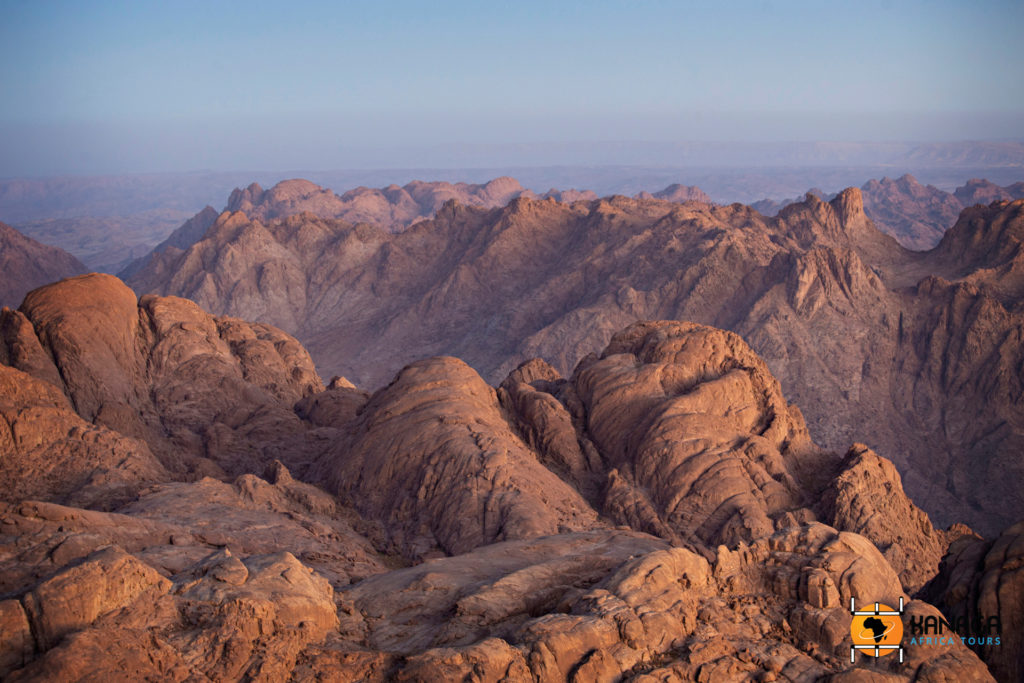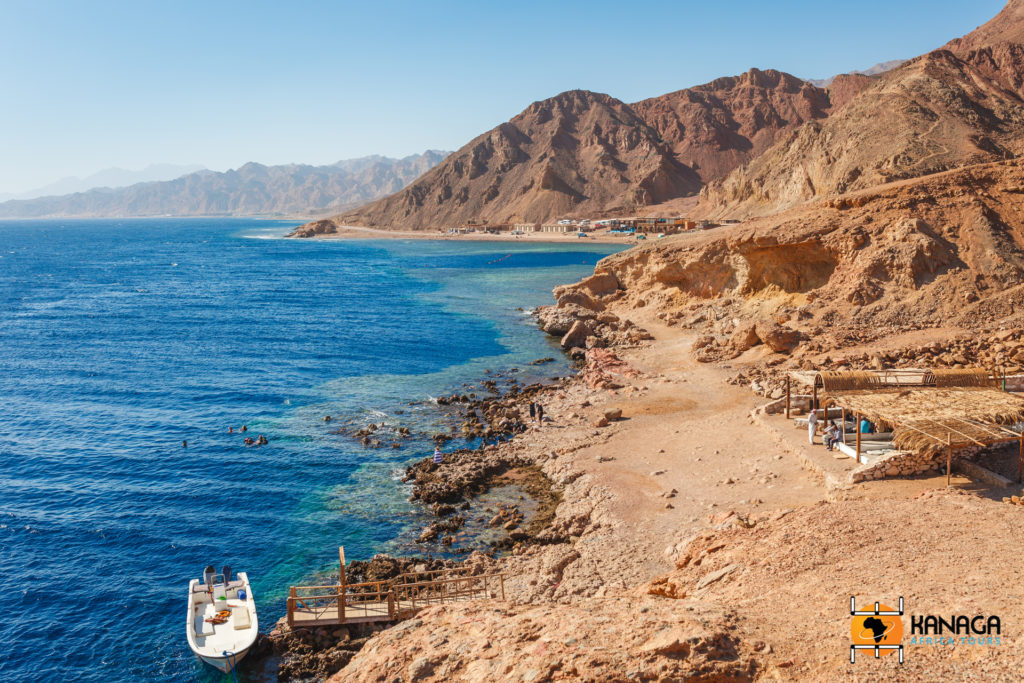© C. Umili
A bridge between the Arabian Peninsula, the Mediterranean and the African continent, the Sinai region, a triangular-shaped peninsular appendage enclosing a whole world of its own, is wedged into the waters of the Red Sea, creating the Gulf of Suez and the Gulf of Aqaba and facing north into the Mediterranean. Three geographical and cultural worlds meet in ‘Sinai Planet’.
Dominated by the heights of Jebel Musa (Mount Sinai) and Jebel Catherine (the highest in the country), it is a desert land of incredible charm, but also rich in unsuspected biodiversity, opening up into aquatic paradises with the most beautiful coral beds in the world, called the “Gardens of Allah”. Its geographical and morphological position is only the prelude to an equally exceptional cultural and environmental wealth, which runs through these biblical lands thousands of years old.
Home to the great Exodus of the Hebrews, which saw the handing over of the Tablets of the Law to Moses on Mount Sinai, a country that is home to monasteries thousands of years old, a legendary destination for pilgrimages, its arid and mountainous lands conceal small miraculous oases where nomadic tribes of Bedouins still find sustenance.
The mountainous area of St Catherine home to a morphology and naturalistic landscape that is unique in the world, made up of rocky desert scenery, crossed by ancient wadis, which open up into verdant valleys or narrow canyons that split the rock. If the overall landscape is arid and lunar, it actually hides a unique wealth of endemic plants and essences found nowhere else on the planet.
From the village of St Catherine, in various directions, the most fascinating treks begin, to discover these enchanted and surreal landscapes and to the holiest place not only of Christianity, but of all three monotheistic religions, the Monastery of St Catherine. It was here that Moses saw the burning bramble burn without being consumed, it was here that God appeared to him with the Tablets of the Commandments and it was from here that Moses spoke to the people.
The Byzantine-era monastery was built under Justinian and preserves intact its original walls to guard one of the most mystical and spiritual places on earth, rich in treasures, now protected by UNESCO. Symbolic places full of biblical reminiscences, crossing the top of Aaron’s Hill with the two white mausoleums dedicated to the prophet, contemplating stony landscapes with bizarre conformations, creeping between the scenic peaks of the Jebel Abbas Pasha with the remains of the Pasha’s palace, they glimpse the waters of the small mountain lake of Galt el-Azraq and the jagged outlines of Ras Safsafa or Jebel Megafa, climb the vertiginous peaks of Jebel Catherine and finally arrive at Jebel Musa, at the foot of which is the Monastery, built in the 6th century and dedicated in the 11th century to the Holy Martyr of Alexandria, Catherine.
The history and sacredness of this place permeates the entire region and it is also linked to the origin of the local Bedouin population, the Gebeleiahs, originally from Wallachia, who were deported here for the construction of the complex and who, remaining here, gave rise to subsequent generations who later converted to Islam. A fascinating and mysterious people, today they have largely abandoned their nomadic origins, while maintaining the need for transhumance. Their handicrafts and the richly decorated female burqa are characteristic. Part of their economy, based on the breeding of dromedaries and goats, includes the cultivation of the numerous oases, where aromatic essences, orchards and date palms grow, true botanical gardens in which the ancient therapeutic properties of endemic plants are preserved.
But Sinai is also made up of natural marine parks, protected areas overlooking the world’s richest and most spectacular coral reefs. From the renowned seaside resort of Sharm el Sheikh to the enchanting Ras Mohammed Park, a promontory inhabited by a riot of aquatic and bird life, including mangrove channels, corals and madreporic reefs, marine scenery dominated by the Tiran reefs and inhabited by thousands of white storks that populate Hidden Bay.
Passing through Bedouin fishing villages and traditional tented camps in the Ras Abu Galum protected area, spotting the ancient wreck of the Maria Schröder ship which ran aground on the Nabq reef in 1956, now part of the landscape, and being enchanted by a landscape of turquoise waters and dunes covered in arak, You will be enchanted by a landscape of turquoise waters and arak-covered dunes, as well as by the lost Blue Hole in Dahab, with its paradisiacal seabed, or the spectacular inlet of Fiord, not forgetting the mysterious Pharaoh’s Island, whose crenellated walls echo the Crusades and Sultan Saladin.
An amazing stretch of coastline, stretching from Nuweiba to Taba, between the transparency of the Red Sea and the desert mountains of the Sinai Peninsula. Enchanting places worth visiting at least once in a lifetime!







